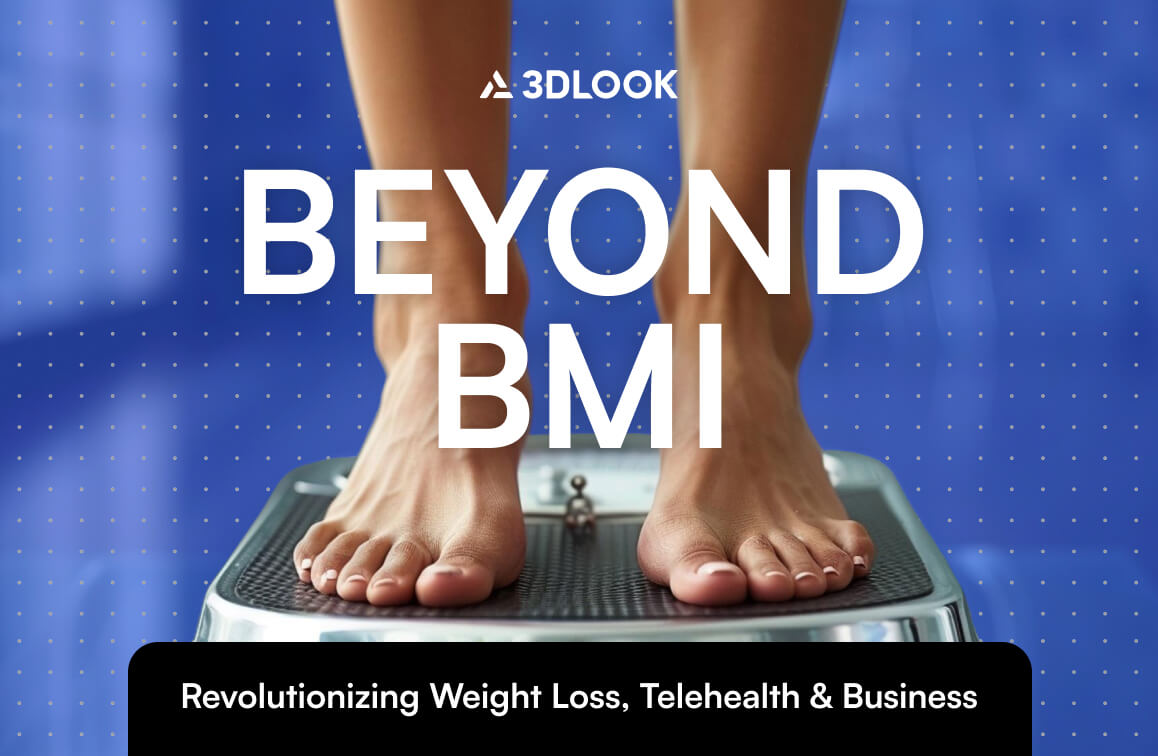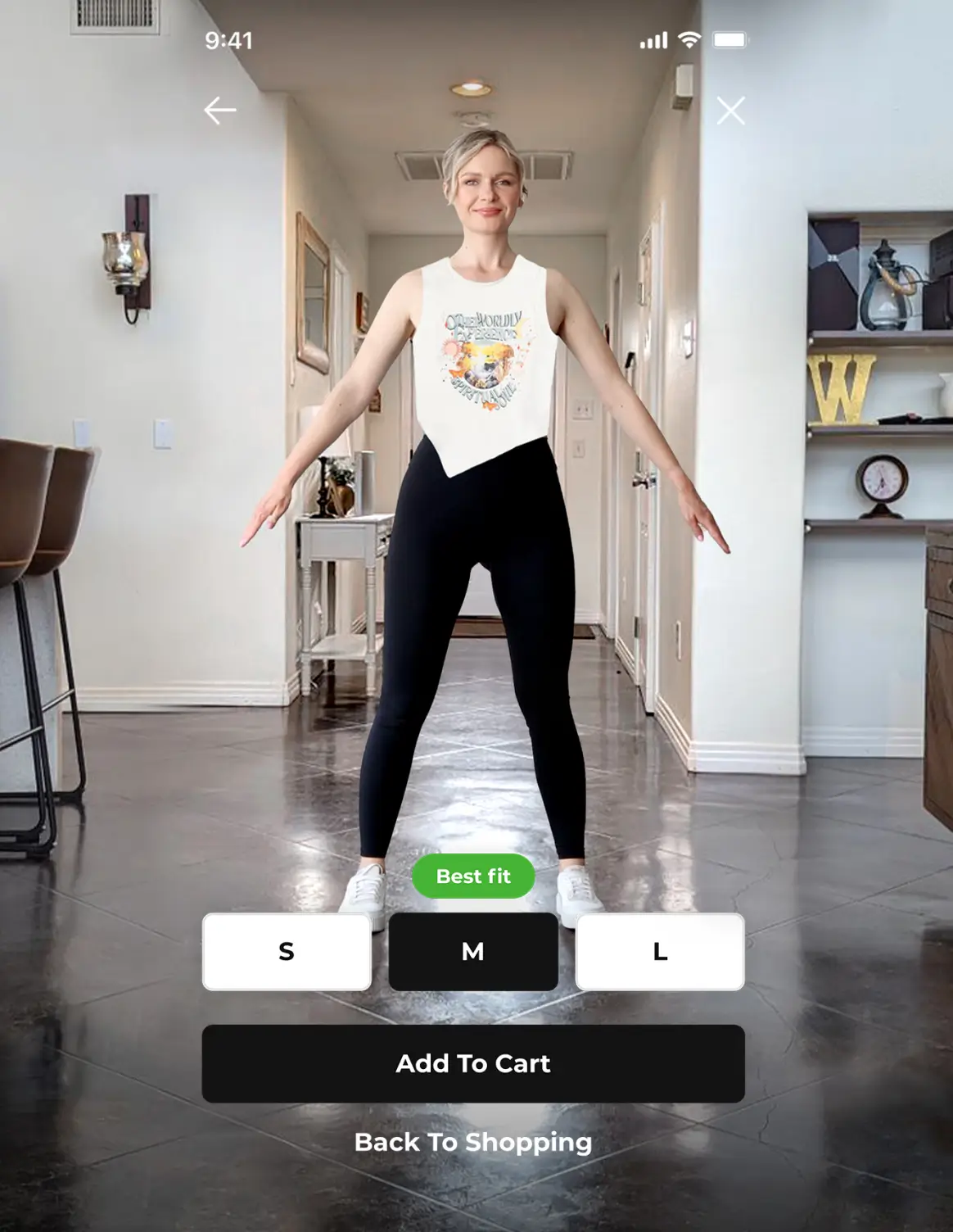The fitness industry has a problem. Despite billions of dollars invested in weight loss programs and wellness initiatives, client retention rates remain stubbornly low with nearly 50% of new members quitting within six months. Meanwhile, the rapid expansion of telemedicine—with the global telehealth market projected to grow from $186.41 billion in 2025 to $791.04 billion by 2032—has exposed a glaring weakness in how we assess and monitor health outcomes remotely. At the center of both challenges lies an outdated metric that’s been misleading health professionals and frustrating clients for decades: the Body Mass Index (BMI).
For over a century, healthcare providers have relied on BMI as a quick health indicator, but this 19th-century formula treats the human body like a simple mathematical equation. BMI divides weight by height squared, completely ignoring the fundamental difference between muscle and fat tissue. The result? A metric that research shows consistently misclassifies individuals, with researchers from the Perelman School of Medicine noting that BMI is “an inaccurate measure of body fat content and does not take into account muscle mass, bone density, overall body composition, and racial and sex differences”.
Recent studies have highlighted the extent of BMI’s limitations. Research investigating BMI accuracy found that whereas only 36% of participants were classified as obese by BMI, close to 3 in 4 were considered obese according to measures of total body fat percentage. This dramatic discrepancy demonstrates how BMI consistently fails to identify individuals at risk while potentially causing unnecessary concern for those who are actually healthy.
Consider these real-world scenarios that BMI gets wrong every day:
The Athletic Paradox: Professional athletes with exceptional fitness levels often register as “overweight” or “obese” on BMI scales due to muscle density. A linebacker with 8% body fat and elite cardiovascular health might share the same BMI as someone with 35% body fat and multiple health risks.
The Skinny Fat Phenomenon: Individuals with normal BMI readings but high body fat percentages—particularly dangerous visceral fat around organs—slip through traditional screening methods. Recent evidence suggests that a thin body is not necessarily a healthy body, with research from Yale Medicine confirming that BMI fails to account for age, activity level, and body composition variations, meaning these people face elevated risks for diabetes, heart disease, and metabolic disorders despite appearing “healthy” by BMI standards.
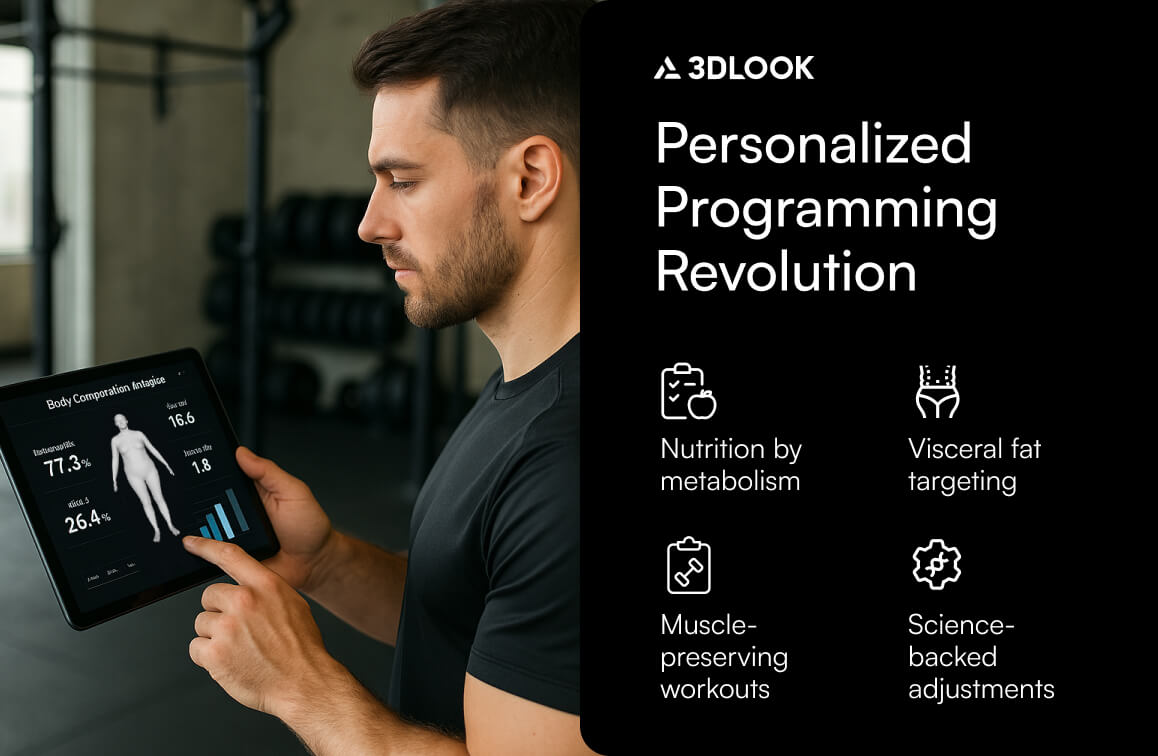
Transforming Weight Loss Outcomes Through Precision Measurement
The weight loss industry’s dirty secret isn’t that people lack willpower—it’s that traditional progress tracking methods actively discourage clients by hiding their actual improvements. When someone loses 10 pounds of fat while gaining 5 pounds of muscle, the scale shows only 5 pounds of progress. BMI might barely budge. But body composition analysis reveals the dramatic positive changes occurring beneath the surface.
Personalized Programming Revolution
Generic weight loss programs treat every client identically, but body composition data enables truly personalized interventions. A client with high muscle mass requires different caloric and exercise recommendations than someone with the same weight but lower muscle density. Those with elevated visceral fat need targeted strategies different from individuals with primarily subcutaneous fat distribution.
Professional trainers and nutritionists using body composition analysis report dramatically improved client outcomes because they can:
- Design nutrition plans based on metabolic needs rather than generic calculations
- Adjust exercise programming to preserve muscle while optimizing fat loss
- Identify and address specific problem areas with targeted interventions
- Provide scientific justification for program modifications that build client trust
Remote Monitoring Capabilities
The integration of body composition analysis with digital platforms enables continuous progress tracking between appointments. Clients can measure themselves at home and share results with their support team, maintaining engagement and accountability in ways impossible with traditional bathroom scales.
Real-World Success Stories
Weight loss programs implementing comprehensive body composition analysis report meaningful improvements in client outcomes. Research on commercial weight loss programs shows that retention rates are critically important for success – of the 60,164 participants in one major study, 73% were retained after 4 weeks, 42% at 13 weeks, 22% at 26 weeks, and only 6.6% at 52 weeks. Programs that help clients understand their true progress through body composition analysis rather than scale weight alone report improved client satisfaction and engagement.
The fitness industry faces significant retention challenges, with research showing that 50% of new gym members cancel their membership within the first 6 months. However, fitness studios that focus on more personalized approaches report substantially higher retention rates compared to traditional health clubs – with fitness studios achieving an average retention rate of 89% compared to traditional health clubs at just 4%.
These improvements in client engagement and retention translate directly into business success. The wellness industry, valued at over $1.5 trillion with a 5-10% annual growth rate, reflects this shift towards data-driven, personalized health solutions that help clients understand their true progress beyond simple weight measurements.
Revolutionizing Telemedicine with Remote Body Composition Analysis
Telemedicine’s explosive growth has democratized healthcare access, but it has also highlighted the limitations of traditional health assessment methods. The global telemedicine market was estimated at $130.5 billion in 2023 and is expected to grow from $149.4 billion in 2024 to $503.8 billion in 2032, at a CAGR of 16.4%. This growth serves healthcare providers conducting virtual consultations who often lack the objective data needed for accurate diagnosis and treatment planning, particularly for obesity-related conditions that affect over 40% of American adults.
Breaking Remote Assessment Barriers
Traditional telemedicine consultations rely heavily on patient self-reporting and basic measurements like weight and blood pressure. For conditions related to body composition—diabetes, metabolic syndrome, cardiovascular disease—this approach provides an incomplete picture that can lead to suboptimal treatment decisions.
Advanced body composition analysis bridges this gap by providing healthcare providers with detailed, objective data during virtual consultations. Practitioners can assess:
- Metabolic health indicators that predict diabetes risk more accurately than BMI
- Muscle mass changes critical for elderly patients and chronic disease management
- Fat distribution patterns that indicate cardiovascular and metabolic risks
- Progress tracking for weight management and rehabilitation programs
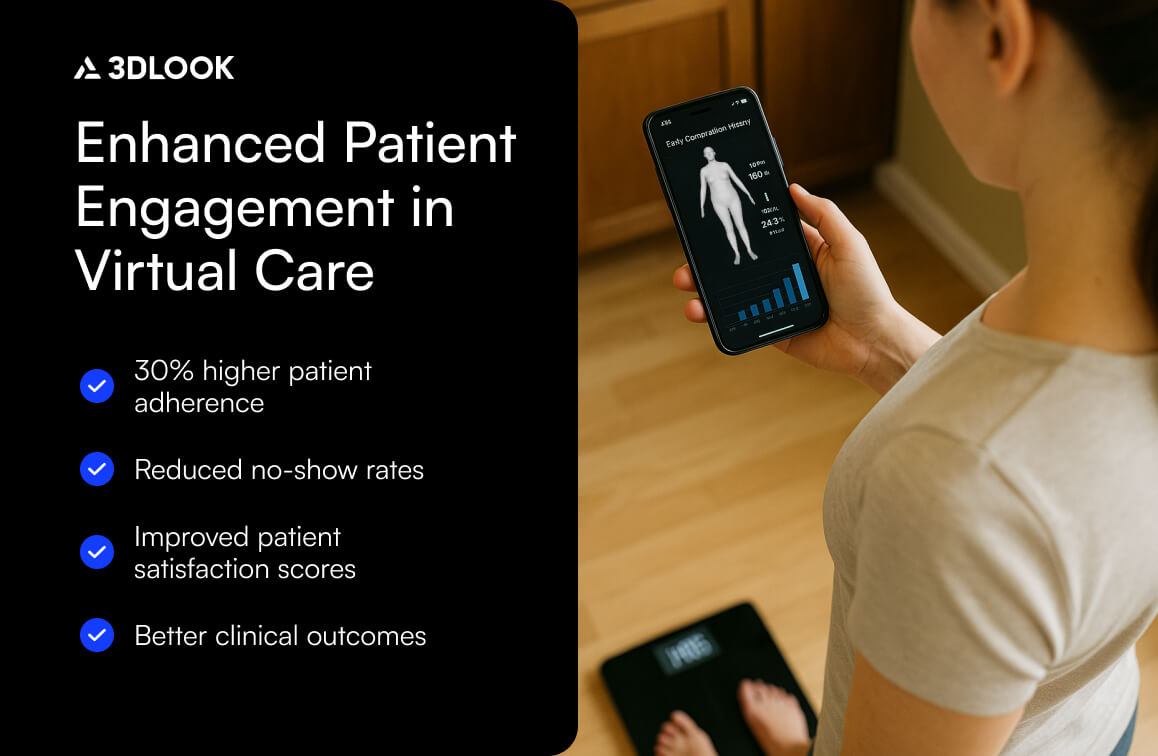
Enhanced Patient Engagement in Virtual Care
One of telemedicine’s biggest challenges is maintaining patient engagement between appointments. Without the accountability and motivation of in-person visits, many patients struggle to adhere to treatment plans and lifestyle modifications. Research shows that patient engagement can lower hospital readmissions by as much as 14%, and 42% of patients are more likely to follow treatment plans if reminded between visits.
Body composition analysis transforms this dynamic by giving patients tangible, visual feedback about their health improvements. The ability to track meaningful changes—even when scale weight remains stable—maintains motivation and demonstrates the effectiveness of prescribed interventions. Studies have shown that engaged patients using remote monitoring tools, such as those with diabetes management, demonstrate improved condition control compared to unengaged patients.
Telemedicine platforms integrating comprehensive body composition capabilities are seeing improved patient engagement outcomes. Research indicates that 76% of patients are interested in telehealth services, and those who participate in remote monitoring programs show higher treatment adherence rates. The convenience and accessibility of home-based body composition measurements create additional touchpoints between appointments, helping maintain the therapeutic relationship that is crucial for long-term health outcomes.
Corporate Wellness Programs: From Compliance to Engagement
Traditional corporate wellness programs face significant participation challenges, with employee participation ranging from 20% to 40% depending on the size and scope of the wellness programs according to a RAND study sponsored by the US Department of Labor. Companies implementing advanced body composition analysis are transforming their wellness initiatives from compliance-driven checkbox exercises into engaging, results-oriented programs that employees actually want to participate in.
Consider Johnson & Johnson’s comprehensive wellness program, which has evolved beyond traditional BMI-based assessments to include detailed body composition analysis. Employees who previously felt discouraged by BMI classifications that labeled fit, muscular individuals as “overweight” now receive personalized health insights that recognize their actual fitness levels. The program focuses on visceral fat reduction and muscle mass preservation rather than simple weight loss, leading to more sustainable health improvements.
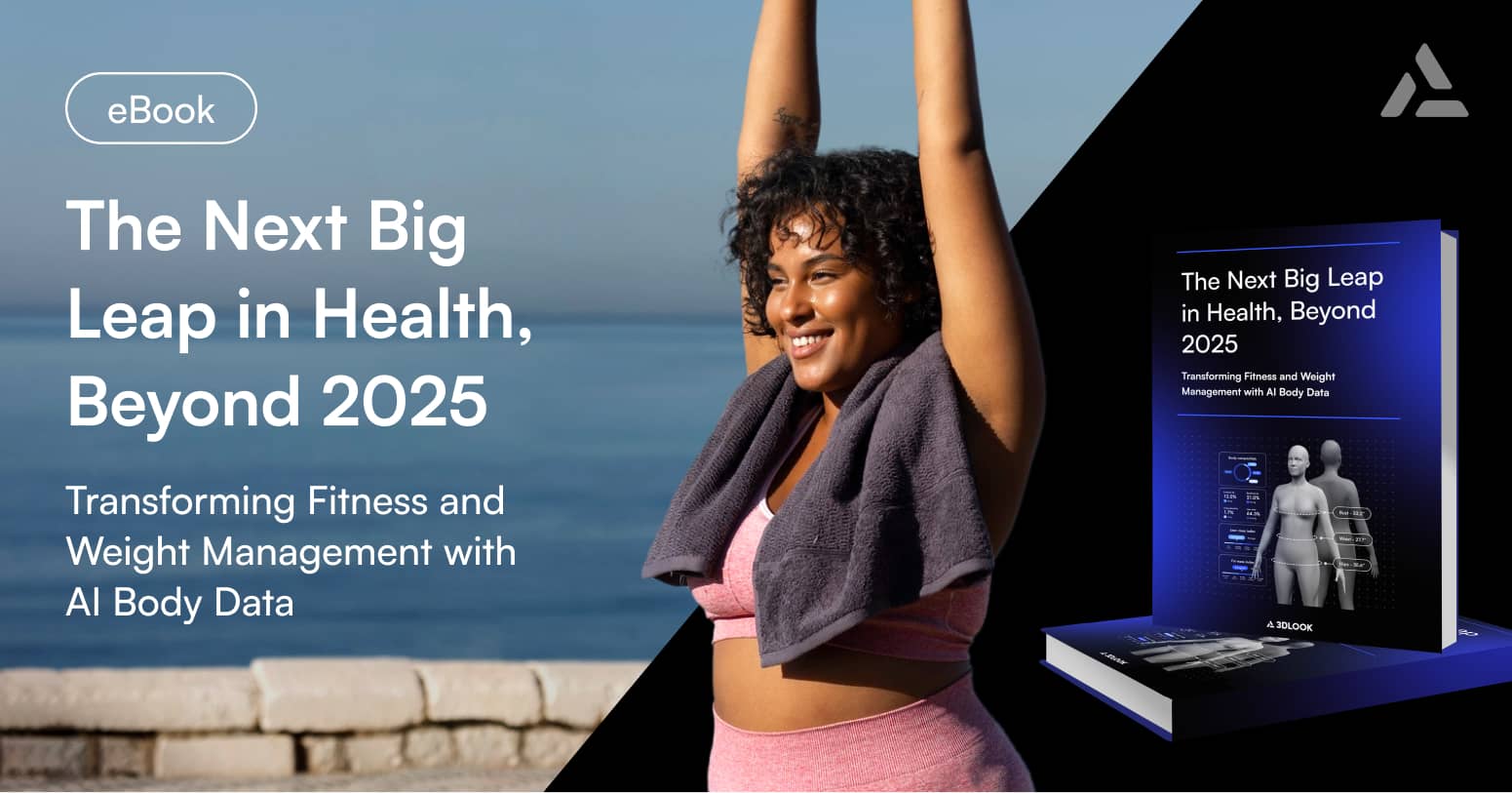
Discover how AI-powered body data is revolutionizing health, fitness, and weight management, setting a new standard for personalization and progress tracking.
Business Impact: Multi-Modal Success in the Modern Market
The convergence of fitness, healthcare, and technology has created unprecedented opportunities for businesses that can adapt to changing consumer expectations. Today’s clients expect convenience, personalization, and measurable results—whether they’re participating in traditional in-person programs or accessing services remotely.
Revenue Growth Through Enhanced Retention
The fitness industry’s biggest challenge isn’t attracting new clients—it’s keeping them engaged long enough to see results. Research shows that 41% of gym-goers cancel their membership because of price, while 23% attribute their cancellation to lack of time. However, the underlying issue often relates to lack of visible progress and motivation rather than just cost considerations.
Body composition analysis directly addresses this challenge by providing clients with immediate, meaningful feedback that traditional scales and BMI measurements cannot offer. Instead of seeing only modest weight changes that may not reflect significant body composition improvements, clients can observe reductions in visceral fat, increases in muscle mass, and improvements in body fat percentage. This comprehensive feedback helps maintain motivation during periods when scale weight might remain stable or even increase due to muscle gain.
The business impact of improved client engagement extends beyond retention. Programs that help clients understand their true progress through body composition analysis create a more professional, scientifically-backed approach that justifies premium pricing and generates stronger word-of-mouth referrals from satisfied clients who finally see the results they’ve been working toward.
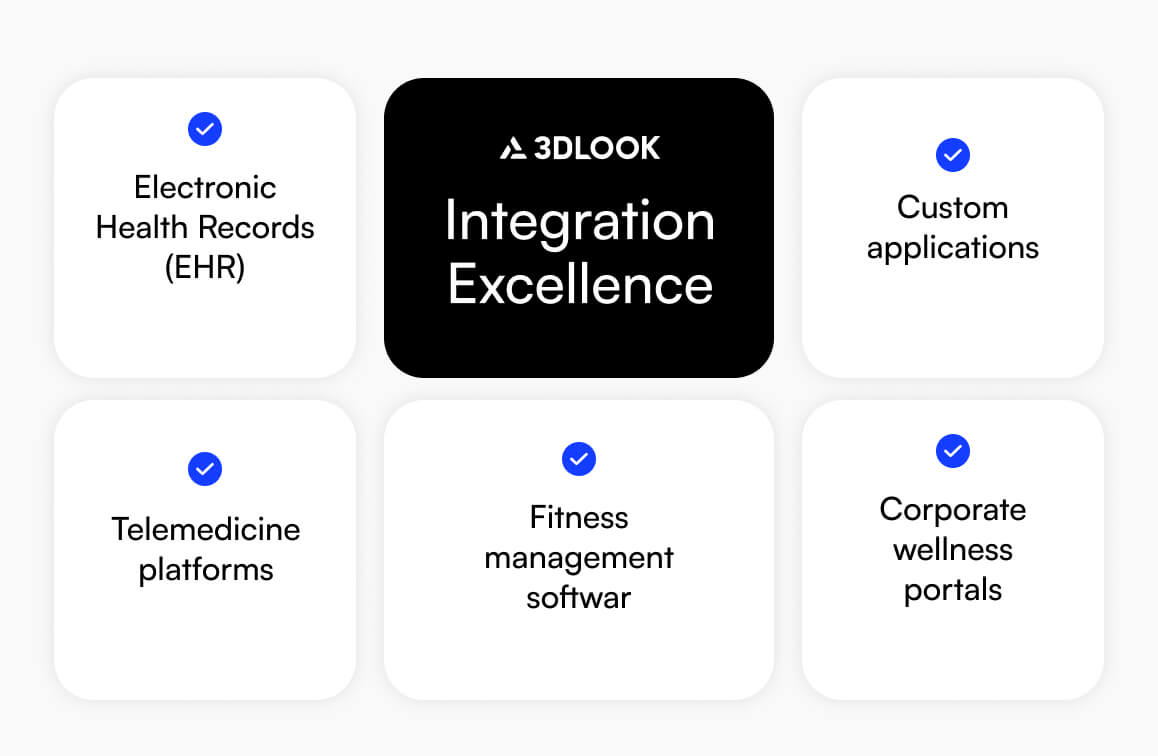
3DLook’s Technology Advantage: Leading the Revolution
In the rapidly evolving body composition analysis market, 3DLook stands out through its unique combination of accuracy, accessibility, and integration capabilities. While traditional methods like DEXA scans provide excellent accuracy, they require expensive equipment and clinical settings. Consumer-grade tools offer convenience but sacrifice precision. 3DLook bridges this gap with technology that delivers clinical-grade accuracy through consumer-friendly applications.
Accuracy That Rivals Gold Standards
3DLook’s proprietary algorithms achieve accuracy levels comparable to DEXA scans—the clinical gold standard—while using only smartphone cameras and computer vision technology. Independent validation studies demonstrate that the technology delivers body fat percentage accuracy within 2-3% of DEXA measurements, muscle mass estimation within 5% of advanced imaging methods, and circumference measurements accurate to within 5mm for key body regions across diverse populations and body types.
This accuracy level enables healthcare providers and fitness professionals to make confident decisions based on 3DLook data, while clients can trust that their progress measurements reflect genuine physiological changes. Research confirms that DEXA scans maintain accuracy within 1-2% margin of error and provide comprehensive body composition analysis that goes far beyond BMI’s limitations.
Accessibility Revolution
Traditional body composition analysis requires specialized equipment, trained technicians, and clinical settings that limit accessibility and increase costs. 3DLook democratizes this technology by enabling accurate measurements anywhere, anytime, using devices that consumers already own. The technology requires no special equipment beyond a smartphone and completes measurements in under 60 seconds without radiation exposure, unlike DEXA or other imaging methods. This creates privacy-friendly measurements that can be done at home while offering cost-effective implementation for businesses of all sizes.
Integration Excellence
3DLook’s API-first architecture enables seamless integration with existing business systems, telemedicine platforms, and healthcare software. This compatibility ensures that organizations can enhance their current workflows rather than replacing entire systems. The platform integrates with Electronic Health Records for healthcare providers, fitness management software for gyms and studios, telemedicine platforms for remote consultation enhancement, corporate wellness portals for employee health programs, and custom applications through comprehensive API access.
Mobile-First Design
As the healthcare and fitness industries increasingly shift toward mobile-first approaches, 3DLook’s smartphone-native technology provides a significant competitive advantage. Clients can complete measurements independently, view progress over time, and share results with their care team through familiar mobile interfaces. This mobile-first approach enables higher client engagement through convenient access, real-time data collection for immediate analysis, automated progress tracking and goal monitoring, and seamless communication between clients and providers.
Final Thoughts
The limitations of BMI and traditional weight-based assessments are no longer acceptable in an era of personalized medicine and data-driven health optimization. Whether BMI is appropriate as an individual- or population-level health measure for adults is debated, with BMI’s historical underpinnings, weight categories, usefulness as clinical diagnostic measure, and application across population subgroups calling the measurement tool into question.
Whether your organization focuses on weight loss, general fitness, telemedicine, or comprehensive wellness programs, the question isn’t whether to adopt advanced body composition analysis—it’s how quickly you can implement it to better serve your clients and grow your business.
Discover how 3DLook’s advanced body composition analysis can transform your programs and boost your business performance.
